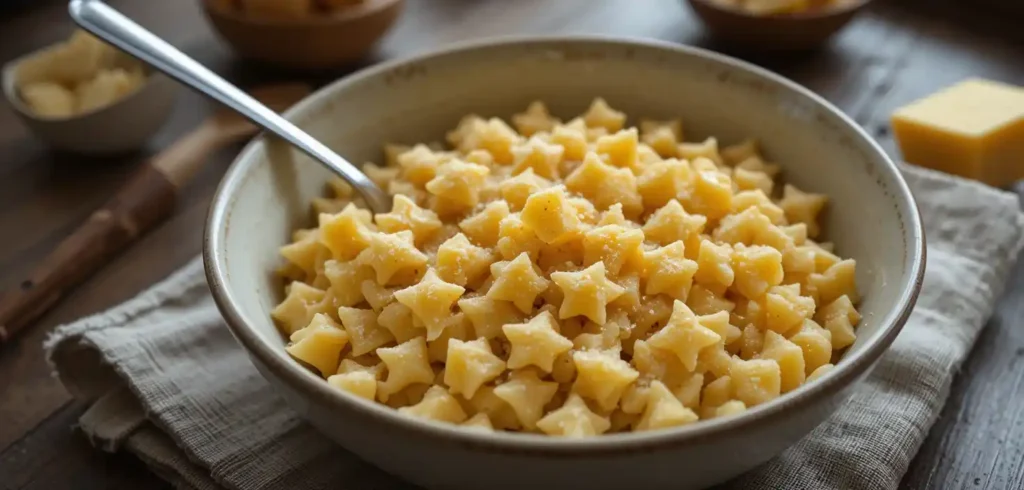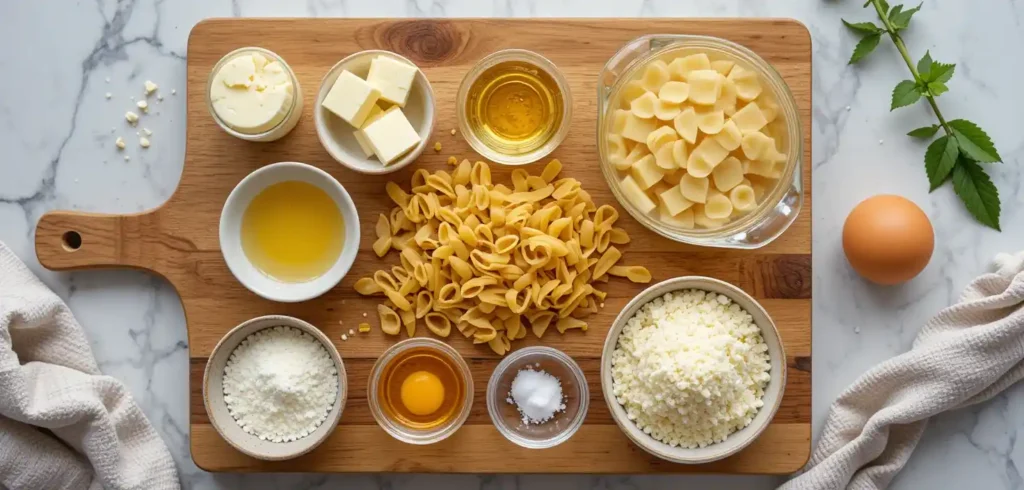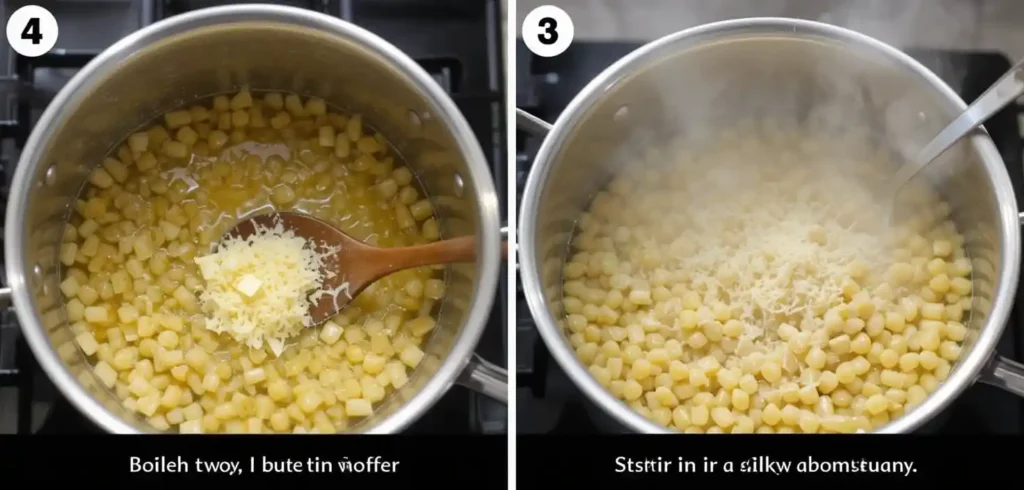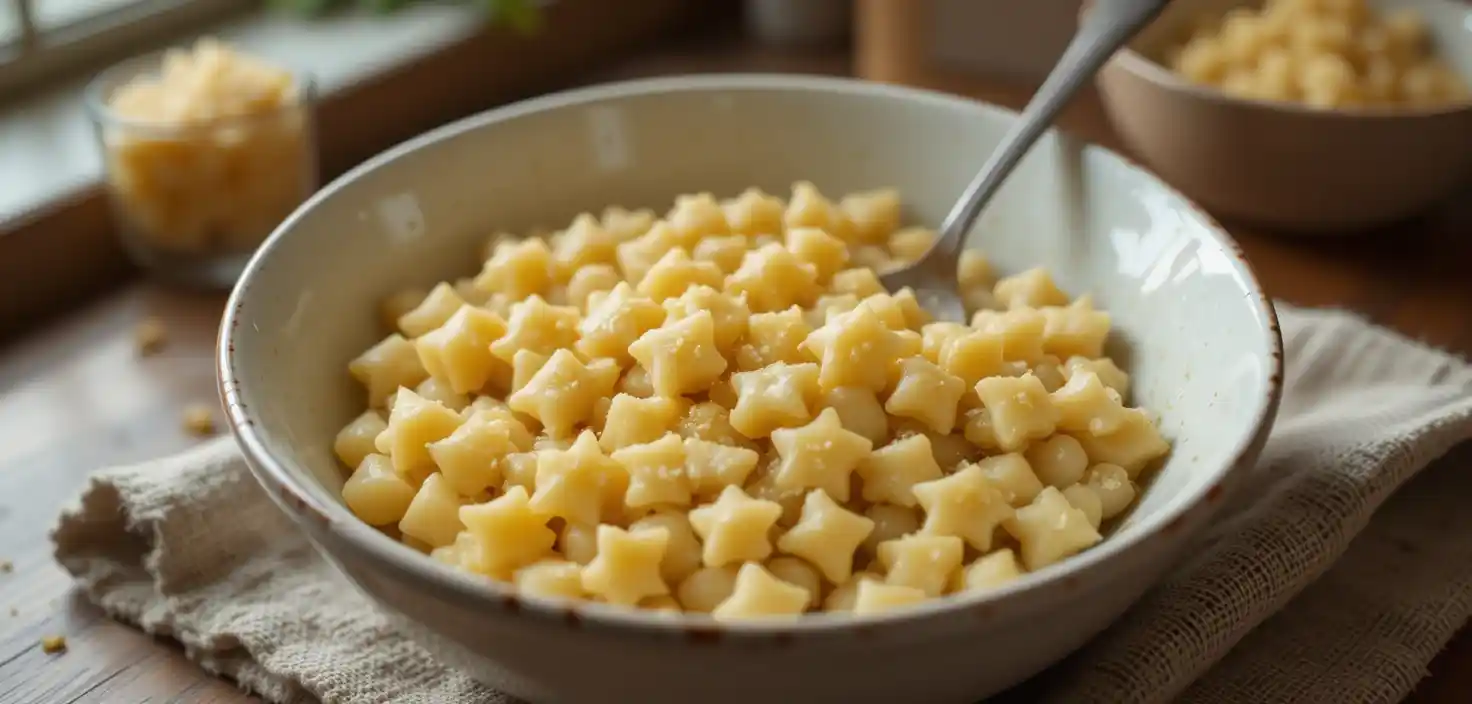Table of Contents
In Italy, there’s a dish so comforting, it’s often referred to as “Italian Penicillin.” This isn’t just a meal; it’s a warm hug in a bowl, evoking memories of childhood and the soothing care of a loved one. Pastina, which translates to “tiny pasta,” is more than just a culinary delight; it’s a cultural phenomenon that has been a staple of Italian comfort food for generations.
This tiny pasta dish, often served with butter, cheese, and sometimes broth, is renowned for its simplicity and its ability to soothe the soul. Whether you’re battling a cold or just need a comforting meal, pastina is the perfect choice. In this article, we’ll explore the history, versatility, and cooking techniques behind this beloved dish, providing you with a comprehensive guide to making the perfect comfort food that feels like a hug in a bowl.

What is Pastina? The Italian Comfort Food
In Italy, pastina is cherished as a comforting meal that transcends age, bringing families together. This tiny pasta is a staple in Italian cuisine, known for its comforting qualities and versatility in various dishes.
The History and Significance of Pastina
Pastina has a rich history in Italian cuisine, dating back to traditional family recipes. It’s not just a type of pasta, but a symbol of comfort and warmth. The significance of pastina lies in its ability to evoke nostalgia and provide solace, making it a beloved dish across generations.
Types of Pastina Shapes
Pastina comes in various shapes, each affecting its texture and ability to absorb broth. Common shapes include stelline (stars), acini di pepe (peppercorns), anellini (tiny rings), and alphabets. Different brands produce their own versions of pastina, with slight variations in size and cooking properties. For instance, Stelline is a popular shape that is slightly smaller than orzo and not grain-shaped like rice. The choice of pastina shape can depend on the intended dish, whether it’s a light, brothy soup or a thicker, risotto-like consistency.
Some popular pastina products were discontinued, such as Ronzoni’s pastina shape in early 2023, but other brand alternatives are available. The tiny size of pastina allows it to cook quickly and absorb flavors effectively, making it a preferred choice for many Italian dishes.
Classic Pastina Recipe
Preparing a classic pastina recipe is a straightforward process that requires just a few ingredients and some basic cooking skills. This comforting Italian dish is perfect for any occasion, and with the right guidance, you can achieve a delicious result.
Ingredients You’ll Need

To make a classic pastina recipe, you’ll need the following ingredients: pastina, chicken stock, butter, Parmesan cheese, salt, and olive oil. The quality of your ingredients can significantly impact the flavor, so choose a good-quality chicken stock and fresh Parmesan cheese for the best results.
| Ingredient | Quantity |
|---|---|
| Pastina | 1 cup |
| Chicken Stock | 4 cups |
| Butter | 2 tablespoons |
| Parmesan Cheese | 1/2 cup, grated |
| Salt | To taste |
| Olive Oil | 1 tablespoon |
Step-by-Step Cooking Instructions
To cook pastina, start by bringing the chicken stock to a boil in a medium-sized pot over high heat. Once boiling, add the pastina and butter, then immediately turn the heat down to low-medium. Continuously stir the pastina for about 5-7 minutes until it’s plump and has absorbed most of the liquid. Remove from heat, season with salt to taste, and stir in the Parmesan cheese. Finish with a drizzle of olive oil and additional grated cheese if desired.

As Italian chef and food writer, Marcella Hazan, once said, “The secret to a good pastina is in the simplicity of its preparation and the quality of its ingredients.”
“A well-made pastina is a comfort food that never goes out of style.”
Tips for Perfect Pastina Every Time
Achieving the perfect pastina dish is an art that requires attention to detail. To make your pastina truly special, consider the following tips that cover the crucial elements of broth, texture, and cheese.
Choosing the Right Broth
The foundation of a great pastina is a rich and flavorful broth. Choose a high-quality broth that complements the dish you’re making. Whether it’s chicken, beef, or vegetable broth, ensure it’s rich in flavor to enhance your pastina.
Getting the Texture Just Right
The texture of pastina is crucial to its enjoyment. Cook it al dente to preserve its delicate texture. Overcooking can make pastina mushy and unappetizing. Stir in some butter to enrich the texture and flavor.
Cheese Selection and Addition
Parmesan or Pecorino Romano are classic choices. Add cheese after removing from heat, allowing it to melt evenly. The right amount of cheese enhances the flavor without overpowering the pastina. Mixing in some butter with the cheese creates a creamy, comforting dish.
Delicious Pastina Variations
The beauty of pastina lies in its adaptability, allowing for a wide range of creative variations. This Italian comfort food can be transformed to suit any taste or dietary preference.
Adding Egg for Extra Richness
Adding an egg to pastina is a simple yet effective way to enhance its richness. By beating an egg with some grated Parmesan cheese and then mixing it into the hot pasta, you create a creamy sauce that coats each piece of pastina perfectly. This method not only adds protein but also elevates the dish’s overall flavor profile. Season with salt and pepper to taste.
Vegetable-Packed Pastina
Incorporating a variety of vegetables into your pastina can make for a nutritious and flavorful meal. Consider sautéing vegetables like spinach, cherry tomatoes, or carrots in a bit of butter before adding the cooked pastina. This approach not only adds color and texture but also infuses the dish with the vitamins and minerals of the vegetables. Finish with a sprinkle of Parmesan and a grind of pepper.
Stanley Tucci’s Pastina Classica
Stanley Tucci’s Pastina Classica recipe, as shared through his partnership with S.Pellegrino, offers a quintessential Italian experience. To make it, use 1 pound of S.Pellegrino Stelline Pasta and 1 cup + 6 tablespoons of finely grated Parmigiano Reggiano. The key to Tucci’s method is reserving pasta water and gradually adding it back with cheese to achieve a silky texture. Serve in bowls and garnish with additional grated Parmigiano Reggiano and a sprinkle of pepper.
| Recipe | Main Ingredients | Key Technique |
|---|---|---|
| Stanley Tucci’s Pastina Classica | S.Pellegrino Stelline Pasta, Parmigiano Reggiano | Reserving pasta water |
| Vegetable-Packed Pastina | Pastina, assorted vegetables, butter | Sautéing vegetables |
| Adding Egg for Extra Richness | Pastina, egg, Parmesan cheese | Beating egg with cheese |
Conclusion: Why Pastina is the Ultimate Comfort Food
At its core, pastina represents the essence of Italian cooking: transforming simple ingredients into a nourishing, comforting meal. This tiny pasta has earned its reputation as the ultimate comfort food due to its simplicity, versatility, and emotional resonance. A bowl of pastina is like a warm hug on a cold day or when you’re feeling under the weather.
Pastina’s ability to provide comfort during difficult times is unmatched. Whether you’re dealing with illness, cold weather, or emotional challenges, a bowl of this creamy, silky pasta can be a soothing balm. It’s a dish that creates connections across generations, with recipes and traditions passed down through families as expressions of care.
In a world where food trends come and go, pastina remains a constant in Italian and Italian-American households. We encourage you to create your own pastina traditions, whether by following classic recipes or developing your own variations. Sometimes, it’s the simplest foods—like tiny pasta shapes in broth with butter and cheese—that provide the greatest comfort in our complex world.
FAQ
What is the best type of broth to use for comforting pastina?
Chicken broth is a classic choice, but you can also use vegetable broth or a combination of both for added flavor. For an extra rich and creamy pastina, try using a high-quality, low-sodium broth.
How do I achieve the perfect texture for my pasta?
To get the ideal texture, cook your pasta al dente, then adjust the liquid accordingly. If it’s too thick, add a bit more broth or water. If it’s too thin, simmer it for a few minutes to reduce the liquid.
Can I add other ingredients to customize my meal?
Absolutely! Consider adding diced carrots, other vegetables, or a sprinkle of Parmesan cheese to give your dish a personal touch. Feel free to experiment with different seasoning and flavor combinations to make it your own.
How long does it take to cook pasta to the right doneness?
Cooking time may vary depending on the shape and brand of your pasta. Generally, it takes around 5-7 minutes to achieve al dente. Be sure to check the package instructions for specific guidance.
What are some tips for making pastina a satisfying comfort food?
To make your comfort food even more satisfying, try serving it in bowls, garnished with a pat of butter or a sprinkle of Parmesan cheese. You can also pair it with a side of crusty bread or a simple green salad for a well-rounded meal.


1 thought on “Pastina Recipe”
Comments are closed.